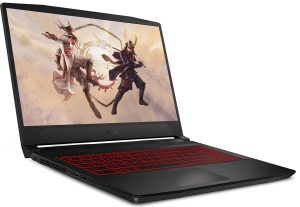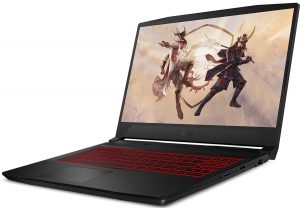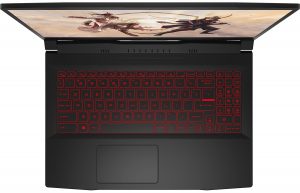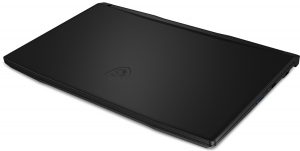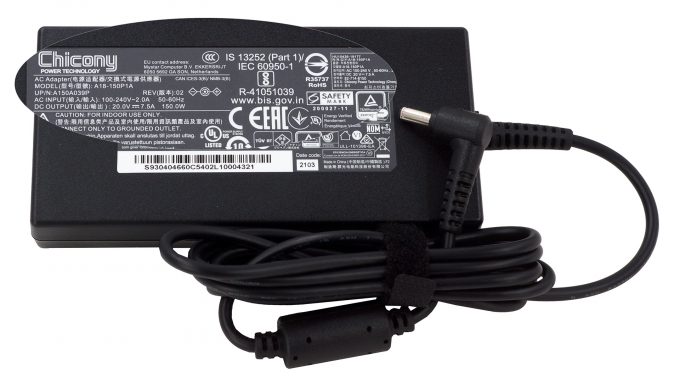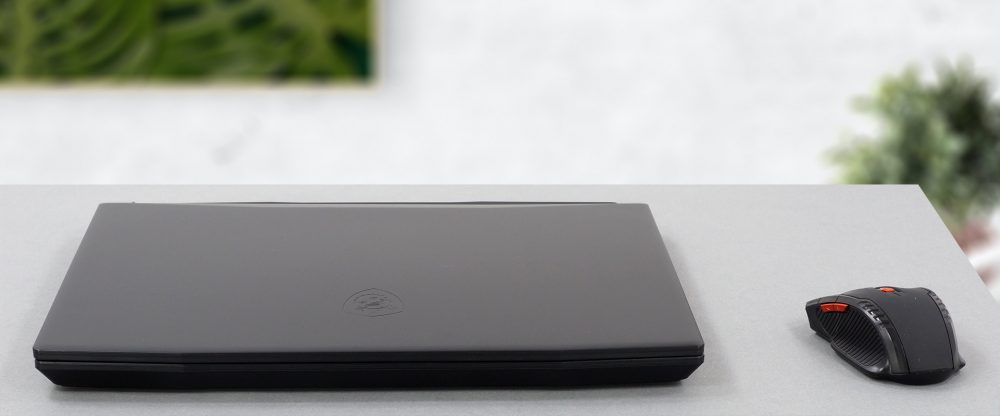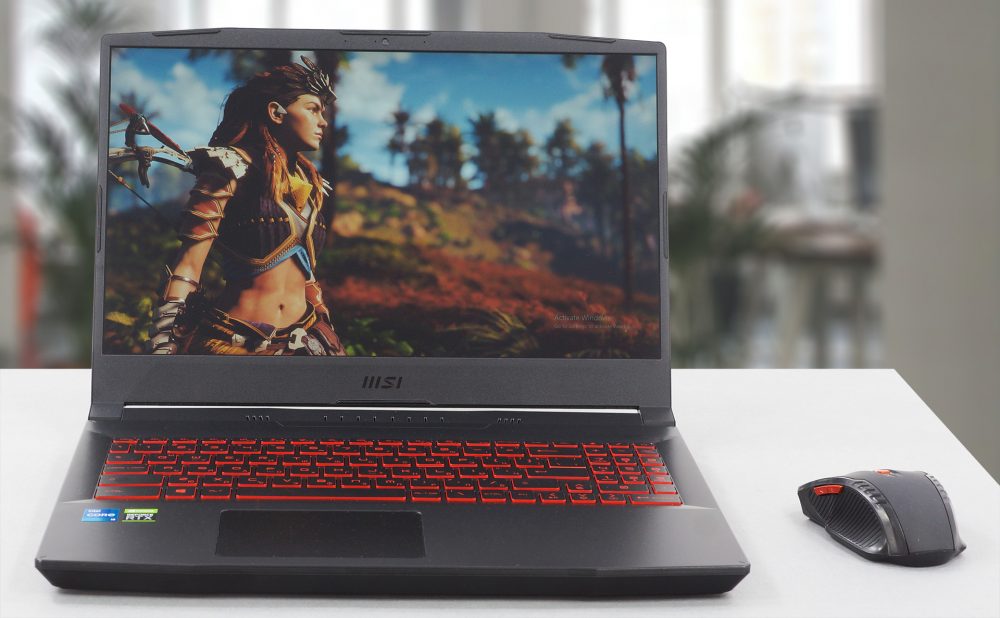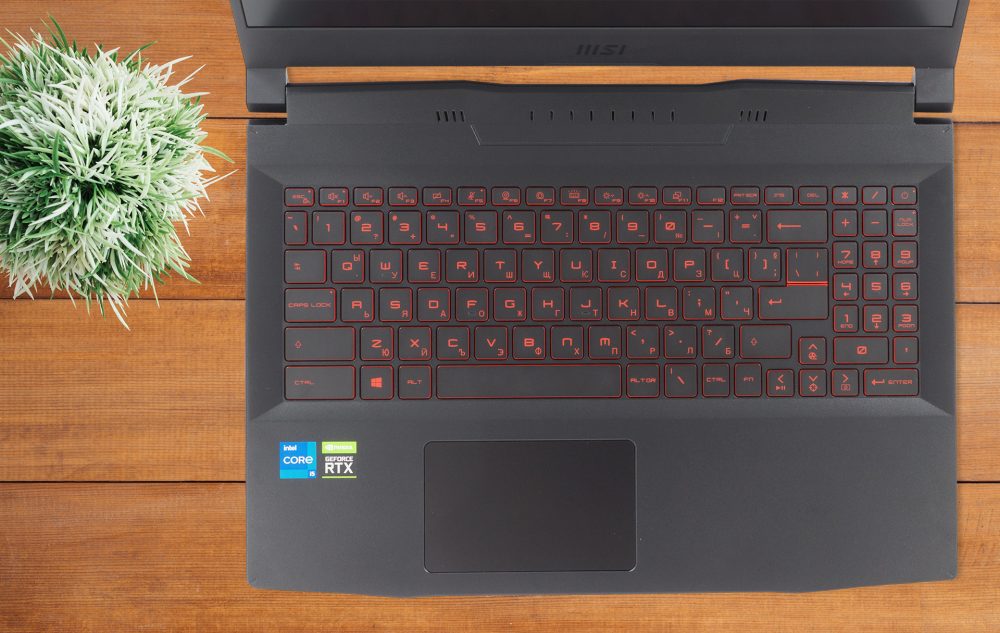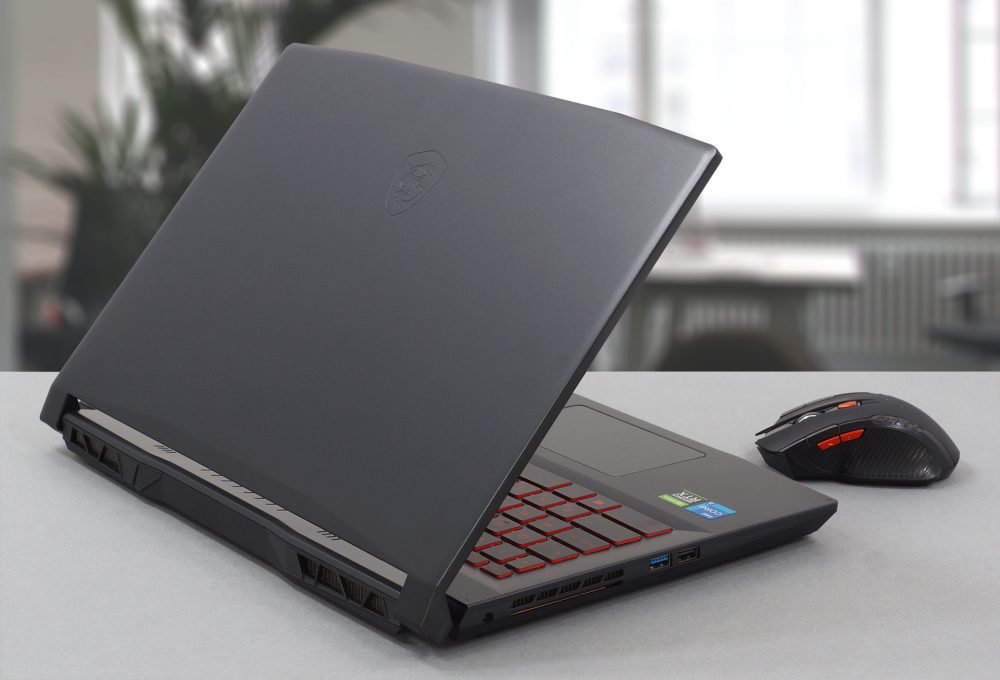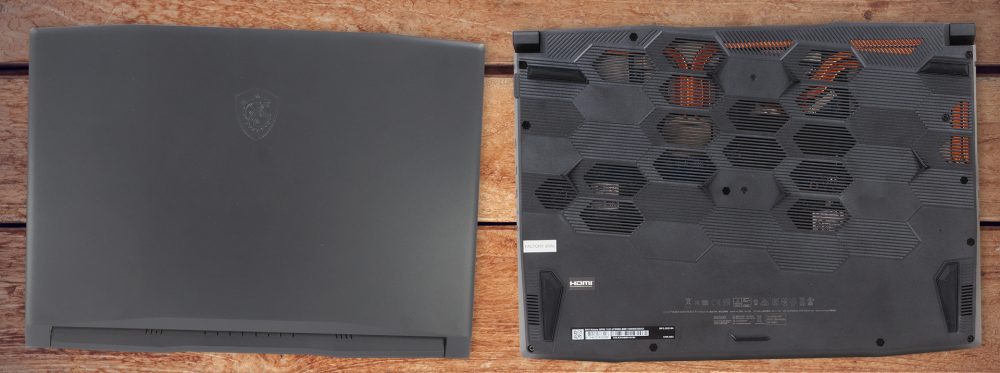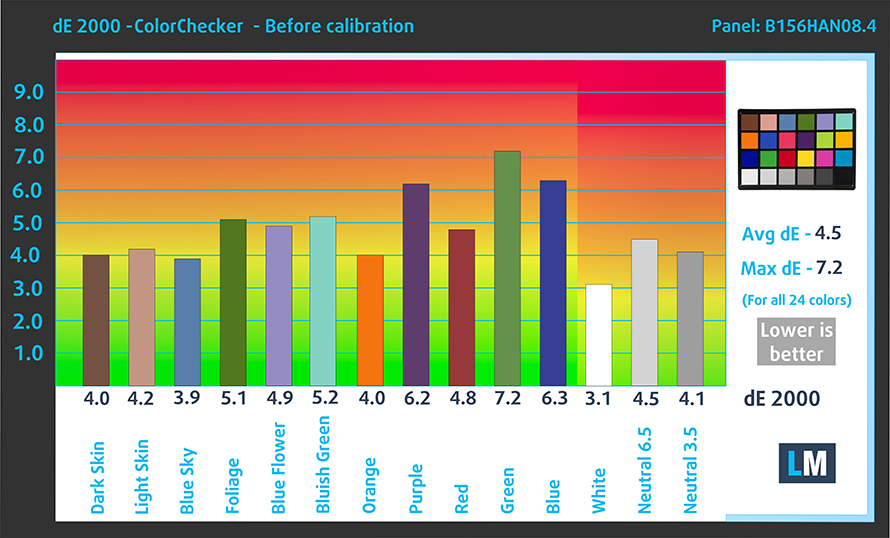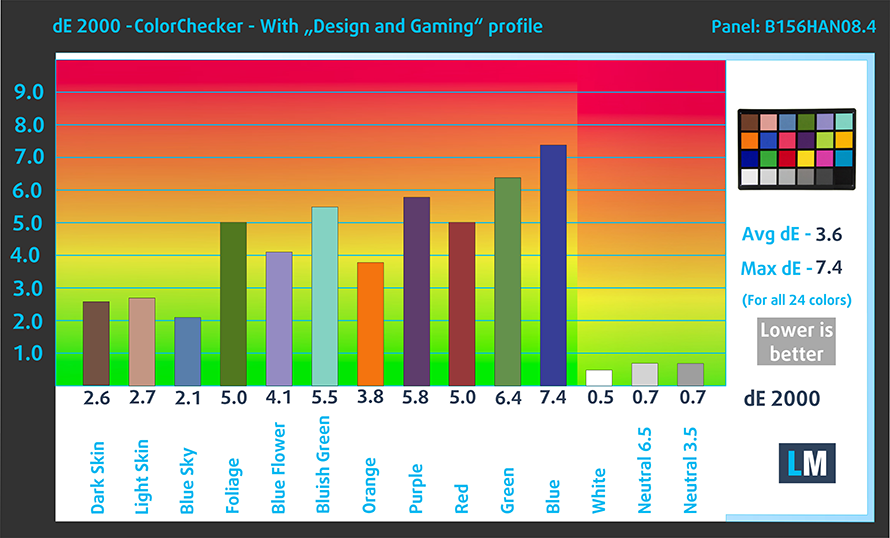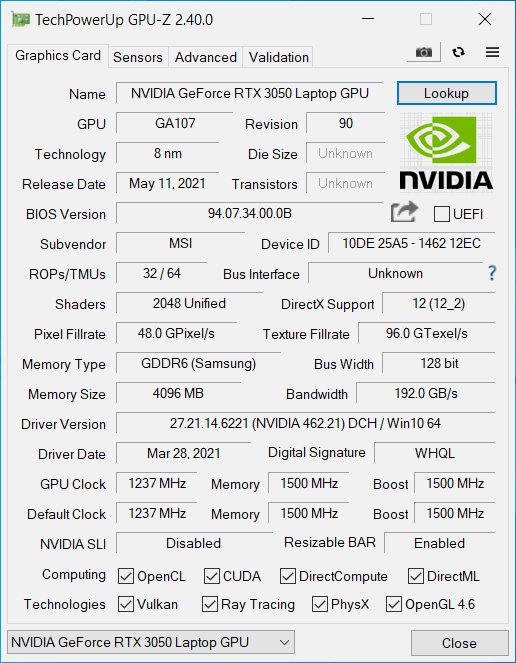MSI Katana GF66 review – entry-level gaming will never be the same
 MSI’s GF series has traditionally been the manufacturer’s entry-level gaming devices. Naturally, this makes it a hot property as not everybody is willing to spend a whole fortune on a laptop. However, the GF notebooks were notorious for their cooling problems, and we really hope that this year’s redesign will address these issues.
MSI’s GF series has traditionally been the manufacturer’s entry-level gaming devices. Naturally, this makes it a hot property as not everybody is willing to spend a whole fortune on a laptop. However, the GF notebooks were notorious for their cooling problems, and we really hope that this year’s redesign will address these issues.
In addition to the mild redesign, we are happy to see that MSI has spared no effort in introducing the latest additions from Intel and NVIDIA. This includes the Tiger Lake H45 processors and the Ampere graphics cards. It is particularly interesting to see how the entry-level RTX 3050 is going to perform now that NVIDIA has given their lowest-tier GPU the ray-tracing treatment.
Thankfully, you get some customization options via the MSI Center. There, you can pick from four performance presets, or create your own. It also lets you adjust your fan curves manually, which is neat.
MSI goes as far as to say that their laptop is good enough for streaming. Well, we all know that you need powerful hardware for that, but the inclusion of Wi-Fi 6 will definitely help.
You can check the prices and configurations in our Specs System: https://laptopmedia.com/series/msi-katana-gf66/
Contents
Specs Sheet
- HDD/SSD
- up to 8000GB SSD
- M.2 Slot
- up to 2x M.2 PCIe x4
- RAM
- up to 64GB
- OS
- Windows 11 Home, Windows 10 Home, Windows 11 Pro, Windows 10 Pro, No OS
- Battery
- 53Wh, 3-cell
- Body material
- Plastic / Polycarbonate
- Dimensions
- 359 x 259 x 24.9 mm (14.13" x 10.20" x 0.98")
- Weight
- 2.25 kg (5 lbs)
- Ports and connectivity
- 1x USB Type-A
- 2.0
- 2x USB Type-A
- 3.2 Gen 1 (5 Gbps)
- 1x USB Type-C
- 3.2 Gen 1 (5 Gbps)
- HDMI
- Ethernet LAN
- 10, 100, 1000 Mbit/s
- Wi-Fi
- 802.11ax
- Bluetooth
- 5.1
- Audio jack
- 3.5mm Combo Jack
- Features
- Fingerprint reader
- Web camera
- HD
- Backlit keyboard
- Speakers
- Stereo Speakers by Nahimic Audio
- Optical drive
All MSI Katana GF66 configurations
What’s in the box?
Inside the package, we found some mandatory paperwork, as well as a 150W charger (180W if you get the RTX 3060 version).
Design and construction
Here, we see a pretty familiar design choice. It resembles a big black box with the MSI logo now being uncolored and embossed into the lid. Interestingly, the laptop is thicker (24.9mm) and heavier (2.25 kg) than its predecessor. Moreover, it is now entirely made out of plastic. If we have to be honest, the base feels like metal, as it is sturdy, and shows almost no deck flex. However, the lid bends like cheese.
But it can be opened with a single hand, which is good, right? It also features slim bezels all around, with the top one being home to the HD Web camera.
Unlike the Pulse GL66 and the GP66 Leopard, the MSI Katana GF66’s keyboard lights up only in Red. This means you don’t get RGB support. Unfortunately, this results in the typical for gaming notebooks Black and Red pattern. Nevertheless, the length of the keystroke is quite long, but the feedback is not as tactile as we would like.
While the Arrow keys are not super small, they are still nowhere near what you get on a Lenovo Legion 5 or an HP Omen. Yet again, you get a “Turbo” fan shortcut, together with the “Up” Arrow key. Also, there is a NumberPad reader, while the Power button resides right above it. It is not separated from the rest of the keyboard, which may not be ideal for some of you.
Next, there is the touchpad. It is average in size and lacks dedicated buttons. With that said, the clicking mechanism is a bit tight and requires some additional force. On the bright side, you get an exceptional gliding and tracking experience.
Take a look at the bottom panel. What is interesting about it, is the ventilation grill. As you can see, the fans are hidden beneath the plastic. While this may look illogical, it makes sure you won’t choke the fans, when you place the device in your lap. In addition to the ventilation grill, there are two speaker cutouts. Hot air, as with the Pulse GL66, escapes the laptop from two vents on the back, and one on the left side.
Ports
The left side of this device houses the power plug, a USB Type-A 3.2 (Gen. 1) port, and a USB Type-A 2.0 port. Then, if you look to the right, you will see an RJ-45 connector, an HDMI connector, a USB Type-C 3.2 (Gen. 1) port, a USB Type-A 3.2 (Gen. 1) port, and an audio jack.
Display quality
MSI Katana GF66 has a 144Hz IPS panel, model number AUO B156HAN08.4 (AUOAF90). Its diagonal is 15.6″ (39.62 cm), and the resolution 1920 х 1080 pixels. The screen ratio is 16:9, and we are looking at a pixel density of – 142 ppi, and a pitch of 0.18 х 0.18 mm. The screen turns into Retina when viewed at distance equal to or greater than 60cm (24″) (from this distance one’s eye stops differentiating the separate pixels, and it is normal for looking at a laptop).

It has comfortable viewing angles. We offer images at 45° to evaluate image quality.

The measured maximum brightness of 235 nits in the middle of the screen and 233 nits as an average for the whole area, with a maximum deviation of 6%. The Correlated Color Temperature on a white screen is 6400K – slightly warmer than the optimal for the sRGB standard of 6500K.
In the illustration below you can see how the display performs from a uniformity perspective. In other words, the leakage of light from the light source.
Values of dE2000 over 4.0 should not occur, and this parameter is one of the first you should check if you intend to use the laptop for color-sensitive work. The contrast ratio is good – 1270:1.
To make sure we are on the same page, we would like to give you a little introduction to the sRGB color gamut and the Adobe RGB. To start, there’s the CIE 1976 Uniform Chromaticity Diagram that represents the visible specter of colors by the human eye, giving you a better perception of the color gamut coverage and the color accuracy.
Inside the black triangle, you will see the standard color gamut (sRGB) that is being used by millions of people on HDTV and on the web. As for the Adobe RGB, this is used in professional cameras, monitors, etc for printing. Basically, colors inside the black triangle are used by everyone and this is the essential part of the color quality and color accuracy of a mainstream notebook.
Still, we’ve included other color spaces like the famous DCI-P3 standard used by movie studios, as well as the digital UHD Rec.2020 standard. Rec.2020, however, is still a thing of the future and it’s difficult for today’s displays to cover that well. We’ve also included the so-called Michael Pointer gamut, or Pointer’s gamut, which represents the colors that naturally occur around us every day.
The yellow dotted line shows MSI Katana GF66’s color gamut coverage.
Its display covers 53% of the sRGB/ITU-R BT.709 (web/HDTV standard) in CIE1976.
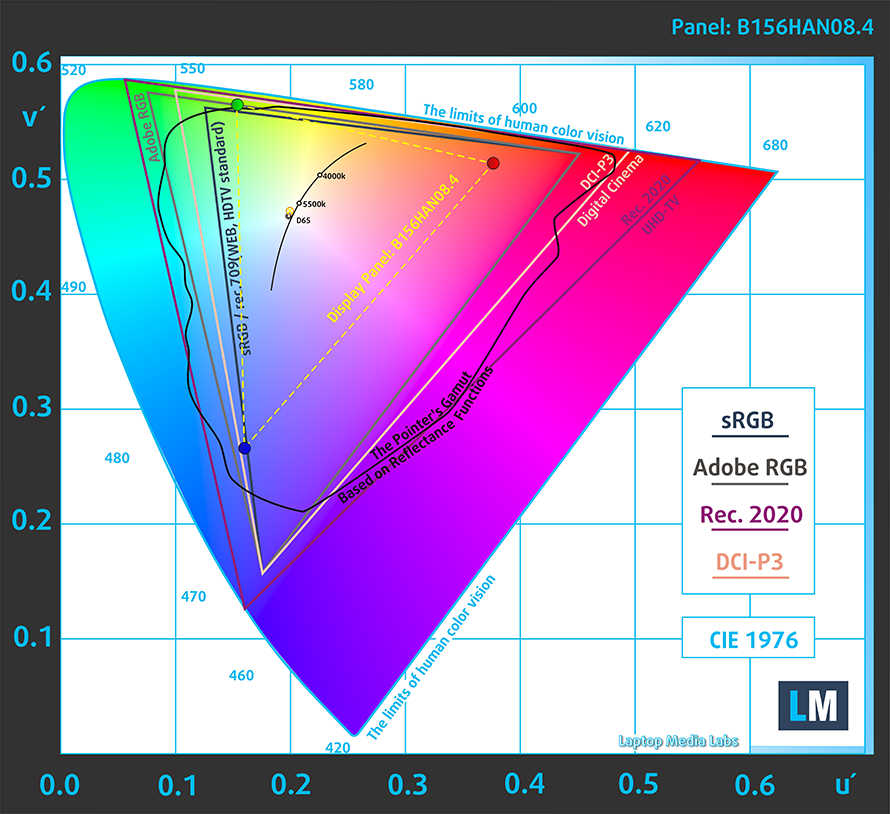
Our “Design and Gaming” profile delivers optimal color temperature (6500K) at 140 cd/m2 luminance and sRGB gamma mode.
We tested the accuracy of the display with 24 commonly used colors like light and dark human skin, blue sky, green grass, orange, etc. You can check out the results at factory condition and also, with the “Design and Gaming” profile.
Below you can compare the scores of MSI Katana GF66 with the default settings (left), and with the “Gaming and Web design” profile (right).
The next figure shows how well the display is able to reproduce really dark parts of an image, which is essential when watching movies or playing games in low ambient light.
The left side of the image represents the display with stock settings, while the right one is with the “Gaming and Web Design” profile activated. On the horizontal axis, you will find the grayscale, and on the vertical axis – the luminance of the display. On the two graphs below you can easily check for yourself how your display handles the darkest nuances but keep in mind that this also depends on the settings of your current display, the calibration, the viewing angle, and the surrounding light conditions.
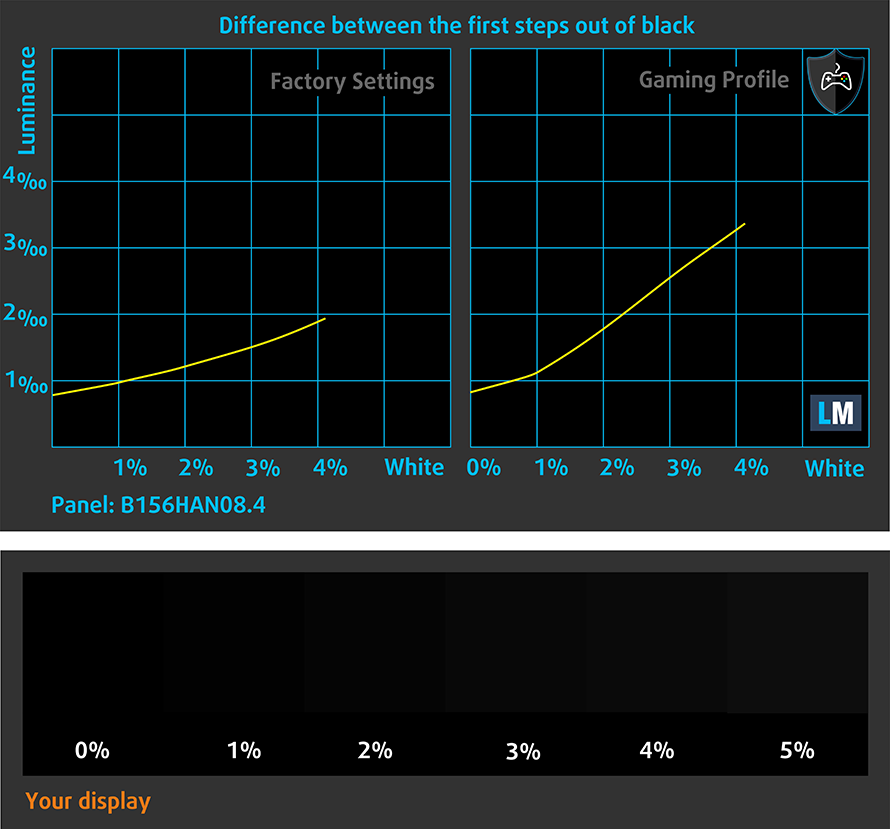
Response time (Gaming capabilities)
We test the reaction time of the pixels with the usual “black-to-white” and “white-to-black” method from 10% to 90% and vice versa.
We recorded Fall Time + Rise Time = 23 ms.
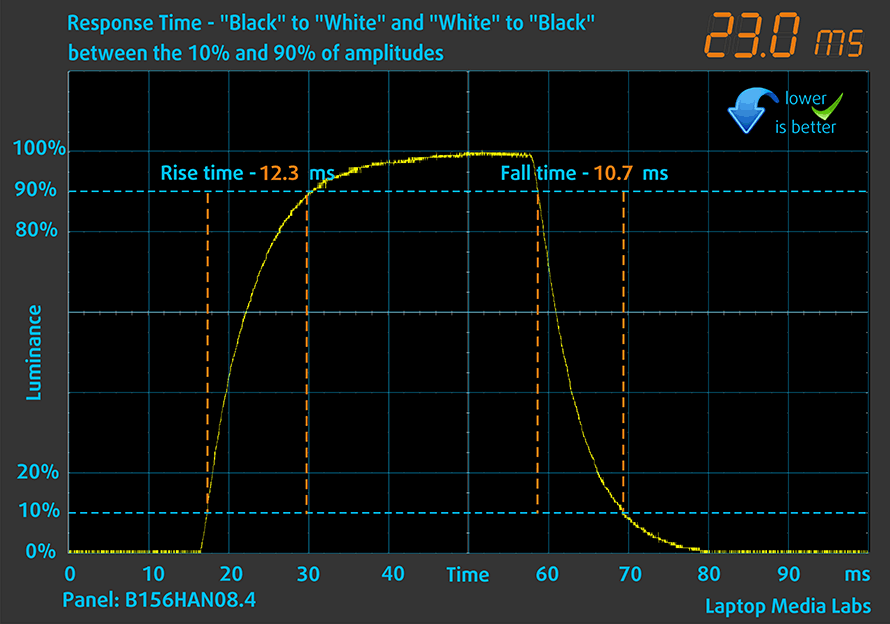
After that, we test the reaction time of the pixels with the usual “Gray-to-Gray” method from 50% White to 80% White and vice versa between 10% and 90% of the amplitude.

PWM (Screen flickering)
Pulse-width modulation (PWM) is an easy way to control monitor brightness. When you lower the brightness, the light intensity of the backlight is not lowered, but instead turned off and on by the electronics with a frequency indistinguishable to the human eye. In these light impulses, the light/no-light time ratio varies, while brightness remains unchanged, which is harmful to your eyes. You can read more about that in our dedicated article on PWM.
The light coming from MSI Katana GF66’s screen doesn’t flicker at any brightness level. Thankfully, this enables you to play for extended periods of time, without the risk of further damaging your eyes and brain.

Blue light emissions
Installing our Health-Guard profile not only eliminates PWM but also reduces the harmful Blue Light emissions while keeping the colors of the screen perceptually accurate. If you’re not familiar with the Blue light, the TL;DR version is – emissions that negatively affect your eyes, skin, and your whole body. You can find more information about that in our dedicated article on Blue Light.
Buy our profiles
Since our profiles are tailored for each individual display model, this article and its respective profile package are meant for MSI Katana GF66 configurations with 15.6″ FHD IPS AUO B156HAN08.4 (AUOAF90).
*Should you have problems with downloading the purchased file, try using a different browser to open the link you’ll receive via e-mail. If the download target is a .php file instead of an archive, change the file extension to .zip or contact us at [email protected].
Read more about the profiles HERE.
In addition to receiving efficient and health-friendly profiles, by buying LaptopMedia's products you also support the development of our labs, where we test devices in order to produce the most objective reviews possible.

Office Work
Office Work should be used mostly by users who spend most of the time looking at pieces of text, tables or just surfing. This profile aims to deliver better distinctness and clarity by keeping a flat gamma curve (2.20), native color temperature and perceptually accurate colors.

Design and Gaming
This profile is aimed at designers who work with colors professionally, and for games and movies as well. Design and Gaming takes display panels to their limits, making them as accurate as possible in the sRGB IEC61966-2-1 standard for Web and HDTV, at white point D65.

Health-Guard
Health-Guard eliminates the harmful Pulse-Width Modulation (PWM) and reduces the negative Blue Light which affects our eyes and body. Since it’s custom tailored for every panel, it manages to keep the colors perceptually accurate. Health-Guard simulates paper so the pressure on the eyes is greatly reduced.
Get all 3 profiles with 33% discount
Sound
MSI Katana GF66’s speakers are relatively loud, but the sound quality is just not there. Its amplitude-frequency characteristic is not great either.
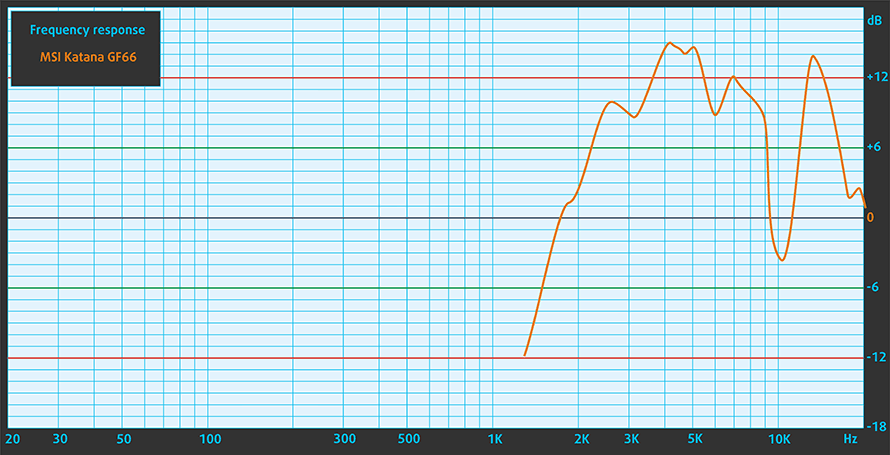
Drivers
All of the drivers and utilities for this notebook can be found here: https://www.msi.com/Laptop/support/Katana-GF66-11UX
Battery
Now, we conduct the battery tests with Windows Better performance setting turned on, screen brightness adjusted to 120 nits, and all other programs turned off except for the one we are testing the notebook with. This notebook’s 53.5Wh battery lasts for 5 hours and 48 minutes of Web browsing, and 4 hours and 25 minutes of video playback.
In order to simulate real-life conditions, we used our own script for automatic web browsing through over 70 websites.
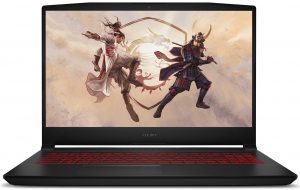
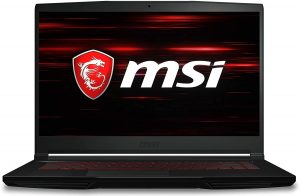

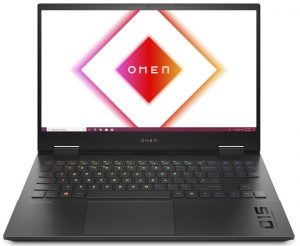

For every test like this, we use the same video in HD.





We use F1 2017’s built-in benchmark on loop in order to simulate real-life gaming.





CPU options
This laptop comes in two iterations regarding the CPU. One has the Core i5-11400H, while the other features the Core i7-11800H.
Results are from the Cinebench R23 CPU test (the higher the score, the better)
Results are from our Photoshop benchmark test (the lower the score, the better)
MSI Katana GF66 CPU variants
Here you can see an approximate comparison between the CPUs that can be found in the MSI Katana GF66 models on the market. This way you can decide for yourself which MSI Katana GF66 model is the best bang for your buck.
Note: The chart shows the cheapest different CPU configurations so you should check what the other specifications of these laptops are by clicking on the laptop’s name / CPU.
Results are from the Cinebench R23 CPU test (the higher the score, the better)
Results are from our Photoshop benchmark test (the lower the score, the better)
GPU options
In terms of graphics, you get the RTX 3050 (60W), RTX 3050 Ti (60W), RTX 3060 (85W), and some models might come with the RTX 3070.
Results are from the 3DMark: Time Spy (Graphics) benchmark (higher the score, the better)
Results are from the 3DMark: Fire Strike (Graphics) benchmark (higher the score, the better)
Results are from the Unigine Superposition benchmark (higher the score, the better)
MSI Katana GF66 GPU variants
Here you can see an approximate comparison between the GPUs that can be found in the MSI Katana GF66 models on the market. This way you can decide for yourself which MSI Katana GF66 model is the best bang for your buck.
Note: The chart shows the cheapest different GPU configurations so you should check what the other specifications of these laptops are by clicking on the laptop’s name / GPU.
Results are from the 3DMark: Time Spy (Graphics) benchmark (higher the score, the better)
Results are from the 3DMark: Fire Strike (Graphics) benchmark (higher the score, the better)
Results are from the 3DMark: Wild Life (Graphics) benchmark (higher the score, the better)
Results are from the Unigine Superposition benchmark (higher the score, the better)
Gaming tests

| Far Cry 5 | Full HD, Normal (Check settings) | Full HD, High (Check settings) | Full HD, Ultra (Check settings) |
|---|---|---|---|
| Average fps | 83 fps | 78 fps | 72 fps |

| Rise of the Tomb Raider (2016) | Full HD, Lowest (Check settings) | Full HD, Medium (Check settings) | Full HD, Very High (Check settings) | Full HD, MAX (Check settings) |
|---|---|---|---|---|
| Average fps | 115 fps | 96 fps | 53 fps | 35 fps |

| Shadow of the Tomb Raider (2018) | Full HD, Lowest (Check settings) | Full HD, Medium (Check settings) | Full HD, High (Check settings) |
|---|---|---|---|
| Average fps | 82 fps | 70 fps | 64 fps |

| Tom Clancy’s Ghost Recon Wildlands | Full HD, Medium (Check settings) | Full HD, High (Check settings) | Full HD, Very High (Check settings) | Full HD, Ultra (Check settings) |
|---|---|---|---|---|
| Average fps | 76 fps | 69 fps | 59 fps | 36 fps |
Temperatures and comfort
Max CPU load
In this test we use 100% on the CPU cores, monitoring their frequencies and chip temperature. The first column shows a computer’s reaction to a short load (2-10 seconds), the second column simulates a serious task (between 15 and 30 seconds), and the third column is a good indicator of how good the laptop is for long loads such as video rendering.
Average core frequency (base frequency + X); CPU temp.
| Intel Core i5-11400H (45W TDP) | 0:02 – 0:10 sec | 0:15 – 0:30 sec | 10:00 – 15:00 min |
|---|---|---|---|
| MSI Katana GF66 | 3.30 GHz (B+50%) @ 95°C @ 52W | 3.14 GHz (B+43%) @ 94°C @ 48W | 3.23 GHz (B+47%) @ 95°C @ 47W |
The clock speeds of the Core i5-11400H were decent, but the temperature it was running at was not impressive.
Real-life gaming
| NVIDIA GeForce RTX 3050 | GPU frequency/ Core temp (after 2 min) | GPU frequency/ Core temp (after 30 min) | GPU frequency/ Core temp (Max Fan) |
|---|---|---|---|
| MSI Katana GF66 | 1675 MHz @ 73°C @ 60W | 1660 MHz @ 78°C @ 60W | 1699 MHz @ 67°C @ 60W |
Unless you turn the maximum fan setting on, you will experience high temperatures. Respectively, the GPU runs at 60W of TGP.
Gaming comfort
Well, you get to choose between high noise and high outer temperatures. Well, “choose” is not the right term, as the laptop will always be pretty warm around the middle of the keyboard.
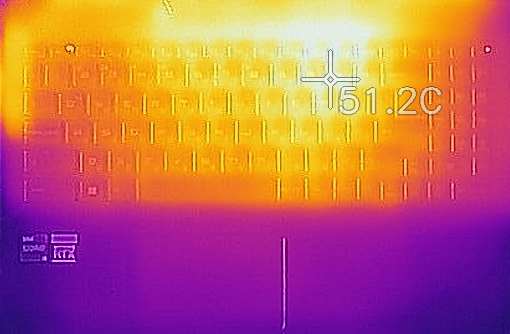
Verdict
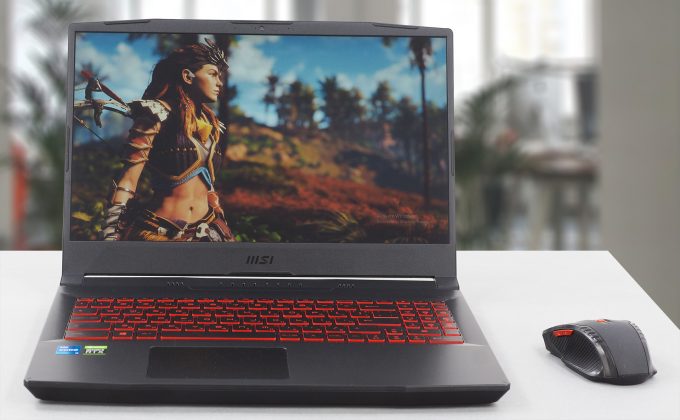 NVIDIA’s GeForce GTX 1060 is still the most popular graphics card according to Steam. Finally, in the face of the RTX 3050, we believe we will see a change in the status quo. Especially in the laptop world. Since it will come in laptops such as the MSI Katana GF66, it’s going to be an extremely affordable solution.
NVIDIA’s GeForce GTX 1060 is still the most popular graphics card according to Steam. Finally, in the face of the RTX 3050, we believe we will see a change in the status quo. Especially in the laptop world. Since it will come in laptops such as the MSI Katana GF66, it’s going to be an extremely affordable solution.
In this review, we found that the RTX 3050 has no problems handling pretty much any game at 1080p. Even at high graphics settings. On the other hand, the Katana GF66 might not be the best example. Despite its metric ton of heat pipes, it struggles to maintain low enough internal temperatures. This, respectively, results in a lot of heat being transferred to the outside, which significantly warms up the keyboard.
On the other hand, there is the Core i5-11400H. The last time Intel made this big of an overhaul to their mobile Core i5 CPU was with the 8th Generation when they introduced Hyperthreading. Now, you get a six-core/twelve-thread processor, instead of the four-core/eight-thread Core i5-10300H. In theory, it should be on par with the Core i7-10750H. But in practice, it performs better.
Back to the MSI Katana GF66 – its 144Hz IPS panel corresponds to the price tag of the device. It has slow pixel response times (which results in tearings) and covers only 53% of the sRGB gamut. On the bright side, its viewing angles are comfortable, and the contrast ratio – good. Also, it doesn’t flicker at any brightness level. Unfortunately, the maximum brightness is not very high, which makes using it in a bright environment a bit of a hitch.
Out of the three MSI laptops we’ve tested with the 11th Generation Intel processors, the Katana GF66 happens to have the best battery life. Although all three have the same 53.5Wh unit inside. We got 5 hours and 48 minutes of Web browsing, and about 4 hours and a half of video playback. In order to achieve these results, however, we’ve gone as far as changing the CPU fan curve. We noticed that by default, the processor fan was always spinning. Thankfully, MSI Center makes it pretty easy to tinker with this stuff. Just go to “User scenarios”, then choose “Advanced” on fan control, and drag the dot that corresponds to the cool temperature all the way down to 0%. This means your fan will only start spinning after your CPU has heated up a bit, which is completely harmless and harnesses a bit more screen-on time.
At the end of the day, the biggest setback of this device is its cooling. We are sure that its hardware has a lot of unexplored potential due to the limited thermal efficiency. And while you can adjust the fan speed to counter the high heat, you won’t enjoy the loud noise either.
You can check the prices and configurations in our Specs System: https://laptopmedia.com/series/msi-katana-gf66/
Pros
- Competitively priced
- Two SODIMM slots, and up to two M.2 PCIe x4 slot
- Rigid structure
- Lacks PWM (AUO B156HAN08.4 (AUOAF90))
- 144Hz refresh rate (AUO B156HAN08.4 (AUOAF90))
Cons
- 53% sRGB coverage (AUO B156HAN08.4 (AUOAF90))
- Slow pixel response times and low maximum brightness (AUO B156HAN08.4 (AUOAF90))
- No SD card reader and Thunderbolt 4
- Runs hot
- Unimpressive battery life
